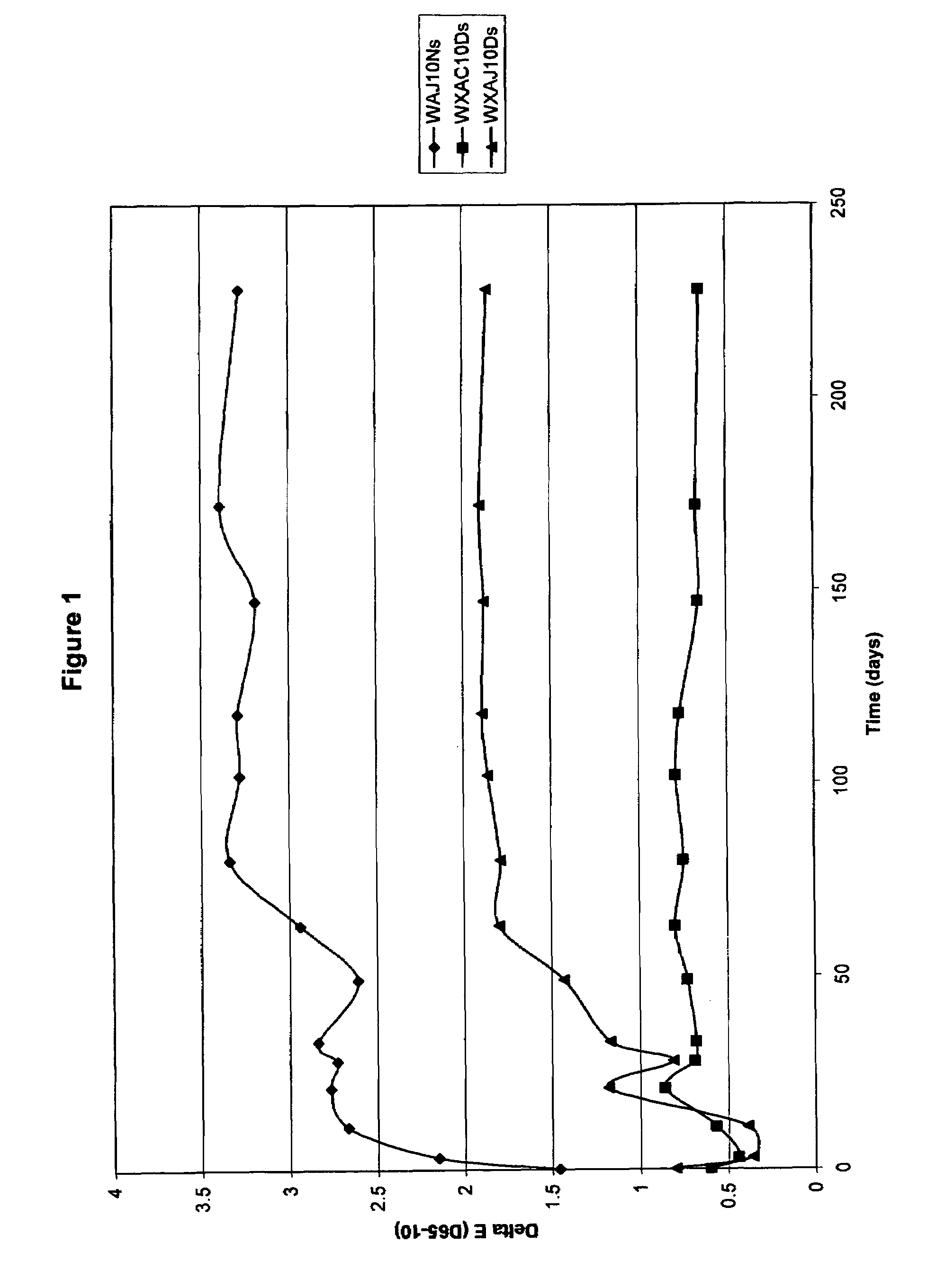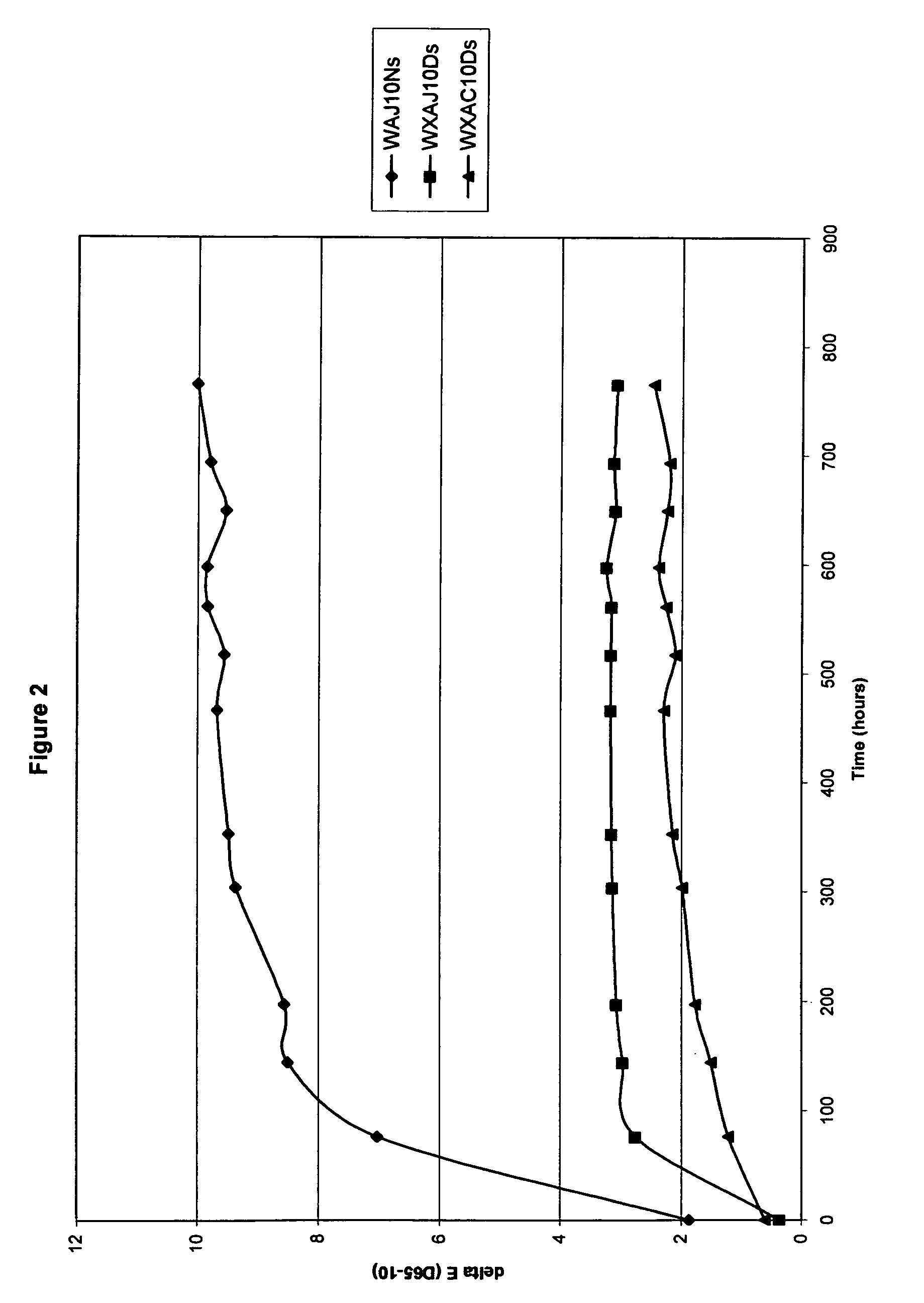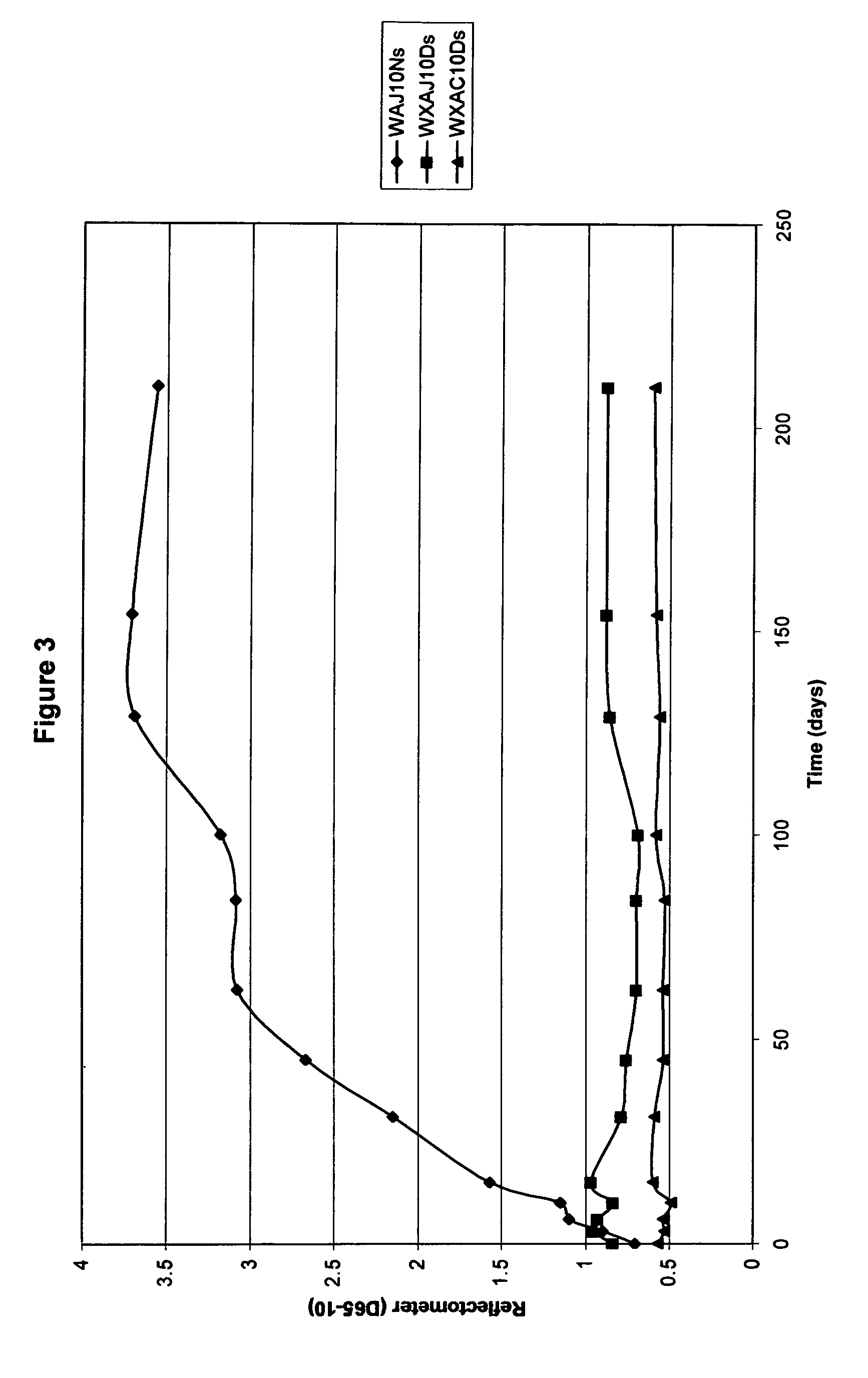Wash-durable and color stable antimicrobial treated textiles
a technology of antimicrobial treatment and textiles, applied in the field of antimicrobial treatment textiles, can solve the problems of poor antimicrobial longevity, limited ability to incorporate triclosan into fiber materials, and molds can create unsightly appearances in or on our homes, so as to improve color stability and antimicrobial longevity.
- Summary
- Abstract
- Description
- Claims
- Application Information
AI Technical Summary
Benefits of technology
Problems solved by technology
Method used
Image
Examples
Embodiment Construction
[0022]All patent applications, patents, patent publications, and literature references cited in this specification, whether referenced as such, are hereby incorporated by reference in their entirety. In the case of inconsistencies, the present description, including definitions, is intended to control.
[0023]In its most simplest or concepts, the present invention provides for fibers, filaments, yarns, fabric, textiles and the like possessing improved color stability together with excellent long-term antimicrobial efficacy, even after substantial washings. Such properties are realized by i) the use of fibers or filaments having incorporated therein a water-soluble zinc salt and a source of antimicrobial silver and copper ions or ii) by treating fibers, filaments, yarns, fabric, textiles and the like with a treatment comprising a water-soluble zinc salt and a source of antimicrobial silver and copper ions.
[0024]As used herein and as context allows, the terms “textile” and “textiles” ar...
PUM
| Property | Measurement | Unit |
|---|---|---|
| aspect ratio | aaaaa | aaaaa |
| aspect ratio | aaaaa | aaaaa |
| weight ratio | aaaaa | aaaaa |
Abstract
Description
Claims
Application Information
 Login to View More
Login to View More - R&D
- Intellectual Property
- Life Sciences
- Materials
- Tech Scout
- Unparalleled Data Quality
- Higher Quality Content
- 60% Fewer Hallucinations
Browse by: Latest US Patents, China's latest patents, Technical Efficacy Thesaurus, Application Domain, Technology Topic, Popular Technical Reports.
© 2025 PatSnap. All rights reserved.Legal|Privacy policy|Modern Slavery Act Transparency Statement|Sitemap|About US| Contact US: help@patsnap.com



